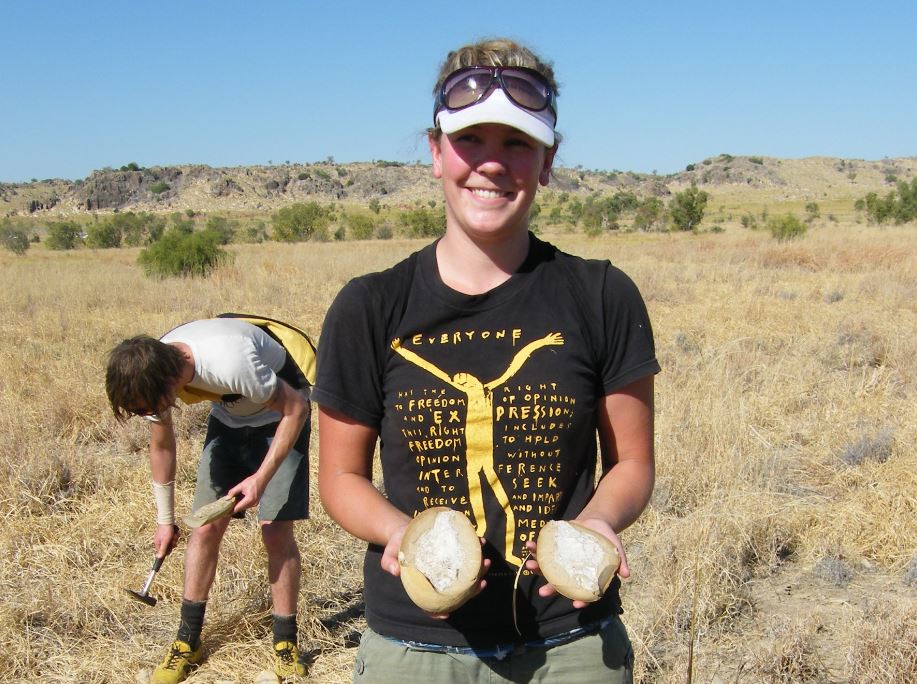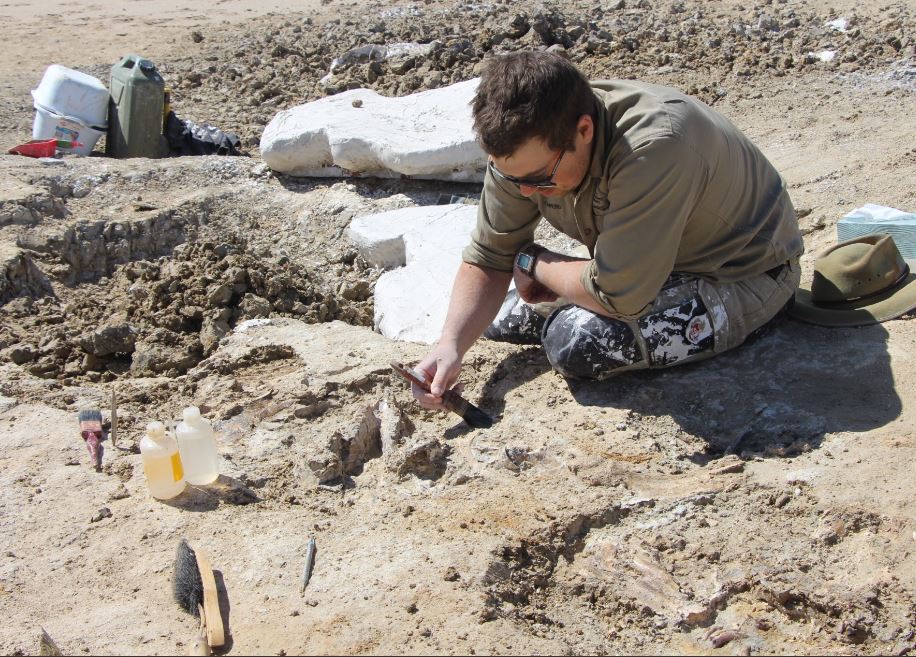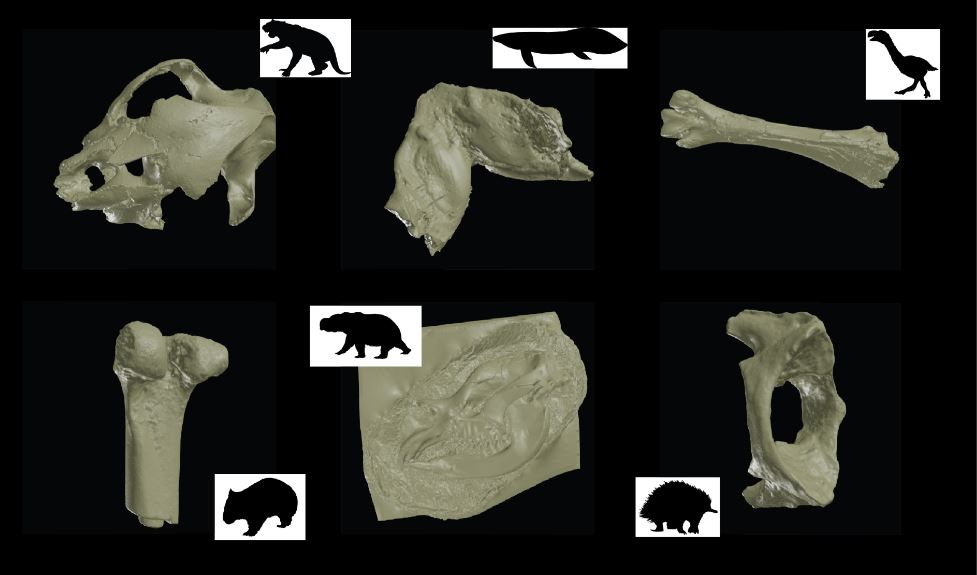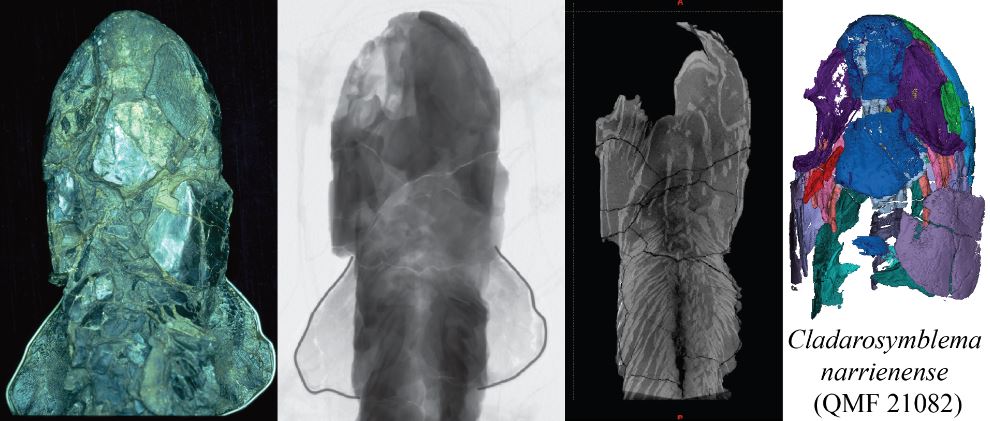
The new Virtual Australian Museum of Palaeontology (VAMP) offers free access to 600 million years of digital Australian fossils, from mysterious early lifeforms to gigantic extinct marsupials.
Led by Flinders Palaeontology, the digitised scans are available and accessible online to students, researchers and the public.
The Flinders University project has been brought to life with help from Flinders Microscopy and Microanalysis, the South Australian Museum, the Museum and Art Gallery of the Northern Territory, the Western Australian Museum and seed funding from the Flinders University College of Science and Engineering.

Dr Alice Clement, Dr Aaron Camens and PhD candidate Jacob Van Zoelen joined Professor John Long at a special launch event at Flinders, Victoria Square to celebrate the new resource.“Between us, and our partners, we have spent many hours scanning, processing and uploading hundreds of three-dimensional virtual models,” they say in an article in The Conversation.
“Australia is geologically old with a rich fossil heritage. We are fortunate to have captured high-quality examples spanning nearly 600 million years of evolution on our continent.
“We have scans of some of the earliest complex life from Ediacaran and Cambrian sites from over 500 million years ago. We have exquisite examples from the best ancient fish deposit in the world, and many amazing extinct megafauna not known from anywhere else.”

The pilot phase of this project has digitised more than 500 fossils across more than 30 genera.
Examples include the marsupial lion Thylacoleo, the giant wombat-like Diprotodon, and huge short-faced kangaroos such as Sthenurus.
Palaeontology is the study of evolution and prehistoric life, usually preserved as fossils in rocks. It combines aspects of geology with biology and many other scientific disciplines.
But a lot of palaeontology really is about rocks. For 200 years, hammers and chisels have been some of its most commonly used tools.
However, advances in modern scanning technology are revolutionising the way we do palaeontology. Precise scans of the internal and external features of fossils let us see them in new ways.

A series of photos (left to right) of a fossil fish, an x-ray image, a ‘tomogram’ or slice through the scan data (middle right), and a 3D virtual model. courtesy Alice Clement (Flinders University).Read more in The Conversation: 600 million years of Australian fossils in unprecedented 3D detail

